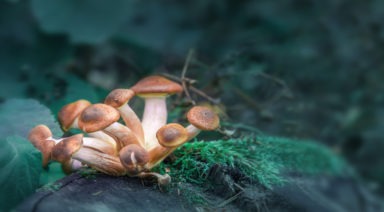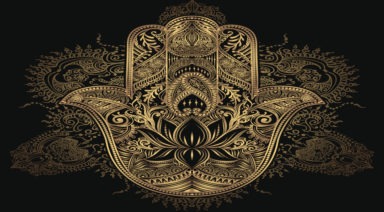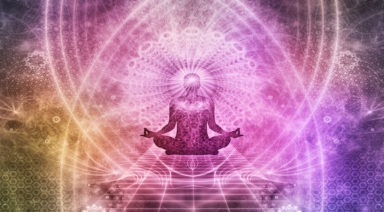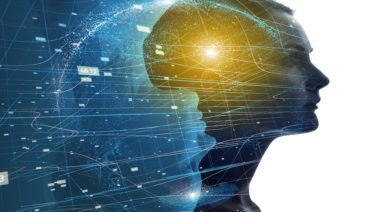Journey into a Psychedelic Trip

What Are Psychedelics?
Psychedelic substances have been regarded as sacred by indigenous cultures and considered a necessary tool to tap into the collective God-consciousness. From healing the sick to furthering artistic endeavors, the act of hallucinating or envisioning usually facilitates advancement for the seeker. We will take a journey into the history and evolution of hallucinogenics.
Taking a Trip
The many facets of psychedelics range from recreational “tripping” to Shamanic journeying. Opening the gateways of our inner mind and spirit is accomplished through various natural methods as well as synthetically comprised.
“Tripping” as coined by the ‘Hippie’ culture, who partake in mind-altering drugs, can encounter dual realities. The mind is clear and observing but with intensified senses. Vibrant colors, infinite geometry, and sharp imageries are all part of the heightened experience. Typically, comfortable surroundings make or break the trip. A user can perceive euphoria or nightmarish conditions. This all depends on their mood before they go into the journey along with the dosage and quality of the substance. Contemporary mind-altering drugs may include synthetic LSD and ecstasy. Naturally derived psychedelics usually are from orally ingesting small cactus-like, peyote and drinking brews made out of a vine called, ayahuasca and eating or brewing psilocybin mushrooms. Herbs like cannabis and Salvia Divinorum have also been utilized for achieving psychoactive effects.
Usually, the experience with strong hallucinogens lasts 5 to 8 hours but durations have been known to last much longer or shorter. The term “peaking” commonly refers to the middle of the time frame when their trip is the most intense. After the peak, the user finally comes down with a gentle ride until the substance starts clearing out of their system. The drug ingested, be it natural or synthetic, creates a simulated poisoning effect that then alters the brain chemicals. Some people may heave on certain psychedelics which makes them start their experience quicker and deeper.
Good Trip
A “good trip” can be described through so many emotions. Feeling radiant and blissful with intense laughter are just a few keywords that touch on the “high” felt. Merging with the cosmos and sensing transcendence is commonly the final aspiration. Out of body experiences can also take place. The doors are opened up to the higher dimensions of consciousness that are usually unobtainable in our 3rd-dimensional reality. Some participants have claimed to have seen archetypal beings, mythical fairies, elves, and fanciful creatures. There is no telling what a person might hallucinate under these circumstances.
Bad Trip
A “bad trip” can dive into the inner demons in a person willing to let them enter. Usually, the trips start off being of good nature but immediate external or suppressed feelings can surface and create pure dread. Delusional thoughts mixed with anxiety can create fear and panic to the user having a bad trip.
We have always heard the news stories about people jumping out of windows who thought they could fly. This shows the impulsive, delusional side of hallucinating. These people may be in a panic mode or just convinced they are superhuman. Sometimes it is like playing roulette with not really knowing what will ultimately occur during those hours of inebriation. Many people have a buddy system in place to help them through the hours just in case the experience takes a darker turn.
Ancient Journeys
The way of the Shaman is to treat the patient or circumstance through esoteric gateways. The word “shaman” originates from the Evenki word “šamán.” Shamans have been, and still are, practicing across the globe. In many indigenous tribes around the planet, their methods are held in sacred secrets. Only a chosen few are passed down the methods of ancient Shamanism with the knowledge of how to submerge into the patient’s soul and facilitate healing.
The Shaman and sometimes their patient will partake in entheogenic drugs. Occasionally, the ailing person in question will bond with the Shaman through participation on the journey for healing advantages.
Neoshamanism
A contemporary spin on Shamanism is referred to as Neoshamanism. It is a collective belief system for many philosophies. Modern-day shamanism comprises of an eclectic range of beliefs and practices that also involves the use of entheogens. One who practices Neoshamanism attempts to attain altered realities and merge with the spirit world which they achieve alongside using archetypal representation, drumming, and dance. Modern-day ‘sweat lodges’ are used at retreat centers as a purification ceremony to facilitate the crossing of dimensions.
There is a concern though about the cultural correctness and legitimacy of Neoshamanism. This form of practice is easily “accessible” to contemporary Western spiritual-seekers who may not have been formally trained. Whether it be sacred, traditional, or a more Westernized version, most forms of Shamanism still incorporate the uses of hallucinogens into their practice. This can also create discrepancies regarding the legitimacy of the substances at hand during their ceremonies.
DMT Molecule
Entheogens, like dimethyltryptamine (DMT), that elevate spirit through naturally derived psychedelics, are typically preferred by the Shamanic practice for creating a divine connection. DMT, like most psychedelics, is considered to be neither addictive nor toxic. High doses of DMT produce a hallucinatory state that involves a sense of “another intelligence.” It is said that the chemicals released during the experience are similar to the chemicals freed before death. Through this gateway of closely crossing, but without the act of dying, users can have access to multiple dimensions.
“DMT, The Spirit Molecule”, is a film available on Gaia, that investigates DMT, a naturally occurring psychoactive compound, which exists in humans. The film examines the science and spirituality of the substance and draws the connections between neuroscience, quantum mechanics and human spirituality.
History of LSD
Chemist, Albert Hofmann, synthesized LSD, also called acid, in 1938, in Switzerland, while looking for a blood stimulant. Its hallucinogenic effects were not discovered until 1943 when Hofmann unintentionally consumed LSD. It was later found that a dosage of as little as 25 micrograms (few grains of salt equivalent) it could produce vivid hallucinations.
In the 1960s LSD was popular by those in research and psychology fields, like controversial advocate Timothy Leary. He conducted behavioral experiments with psilocybin, an active ingredient of the fungi. It is said that he encouraged American students to participate with his supply and was later discharged from his teaching profession. He would become an influential leader that revolutionized a counterculture with using mind bending drugs.
Psychedelic Icons
Legendary psychedelic icon, Terence McKenna, shifted the public consciousness regarding hallucinogenics. He was an ethnobotanist, author and a supporter for responsible tripping using plant-derived spiritually enhancing entheogen or psychoactive substances, such as natural occurring DMT, psilocybin mushrooms and ayahuasca. McKenna advocated for the exploration of deepened altered states and suggested that DMT opened the doors into parallel dimensions. He studied shamanic practices of the Bon tradition in Nepal and geared his practices towards divine experiences. Under the influence, he claims to have had encounters with higher dimensional entities, extraterrestrials, faceless “machine” elves, ancestor spirits, and has astral traveled.
Famed visionary artist, Alex Grey, has openly shared his relationship with psychedelics. Grey has publicly described his early experiences. He describes having a revolution in consciousness as well as being unified with the cosmos. His artwork takes the viewer on a journey toward their own divinity and electrified mind. The intentional psychedelic community has embraced his work and consider it as an influential contributor to the multidimensional perspective.
A few great discussions and documentaries with Alex Grey are available through Gaia. Regina Meredith did an interview, Alex on The Art of Humanity, on her show, Conscious Media Network. He discusses his inspiration for his art, his view on the future, and the role of musicians as shamans. Also, Sacred Mysteries presents on Gaia, Artmind, which gives an intimate portrayal of the visionary artist. Mind Shift with Danial Pinchbeck has a great dialogue with this legendary artist that goes into his own view on his work with the facilitation through psychoactive journeying.
Acid Culture
Music has also been influenced by psychoactive substances. In the late 60’s, psychedelic music was starting to be released into hippie culture. Jefferson Airplane released, “White Rabbit” and Jimi Hendrix’s song, “Purple Haze” referenced LSD cryptically.
Music from Pink Floyd’s progressive album, “Ummagumma” infiltrated the tripping scene as well as later in the 80’s release of the famed rock opera, “The Wall”. Surreal images and a tale of a man’s hallucinatory inner struggles between sanity and delusion are depicted. Psychoactive indulgence was brought in the forefront to society through music and film.
Legendary performances at Woodstock and popular traveling bands such as the Grateful Dead, created a revolutionary wave of hippie inspired festivals across the lands keeping the psychedelic musical movement alive for many years.
A newer generation of consciousness exploring listeners gravitated in the 1990’s until present times to trance music. Performers like, Shpongle, transformed the acid culture with electronic DJ sets amid mixed world percussion beats and vocal samples from the famed Terence McKenna. This music modernized the changing times of psychoactive entertainment being played at raves and clubs worldwide. Ecstasy became the psychedelic drug of choice when the rave scene was introduced and the quest for vision seeking sustained.
Exploratory vs. Controversy
Even with all it’s public stigma through the recent decades, experiencing the world of psychoactives is still sought after within the suburbs and inner cities to the jungles of South America. Those who discover psychedelics are usually left with a lasting impression for their lifetime, be it good or bad.
The realities through transcendence on a conscious level are altered forever through the act of taking a mind warping trip. After consumption, perceptions may be heightened. Trailing effects are often lingering. Creativity may be pictured in a whole new light. Our purpose in life perhaps will be met with less self judgment and more clarity. This article is neither meant to condone nor ignore the possibilities of the intelligently derived gifts the universe has left for humanity to discover. It is merely supposed to unlock the history, trends and journey into a psychedelic trip.
Study Finds Ayahuasca Affects Epigenetic Gene Expression

In this Gaia News special investigation, we take a look at groundbreaking new research being done on ayahuasca, an ancient psychedelic plant medicine showing great promise in addressing the most difficult to treat mental health conditions, and may even change our DNA.
Dr. Simon Ruffle is a psychiatrist and researcher who led this study conducted in the Peruvian Amazon.
“Ayahuasca is a psychedelic brew that is used in the Amazon rainforest. It’s been used for at least hundreds of years and there’s some evidence that suggests that it may have been used for thousands of years,” Ruffell said.
“It’s used for a wide variety of purposes and normally by indigenous tribes. It’s used most commonly, now, for healing. And there’s been a lot of interest from people from the West going to the Amazon rainforest in order to drink ayahuasca. And also ayahuasca is spreading all over the world and now can be found on pretty much every continent.”




































